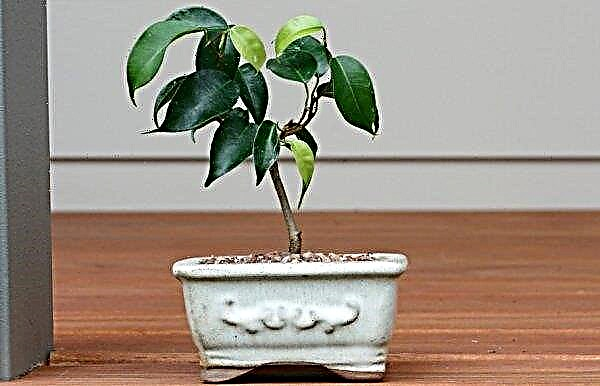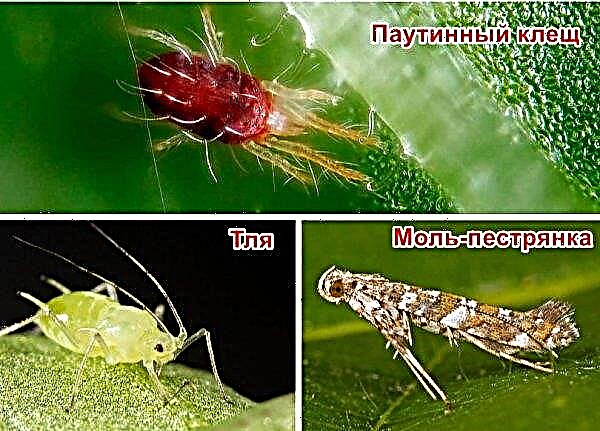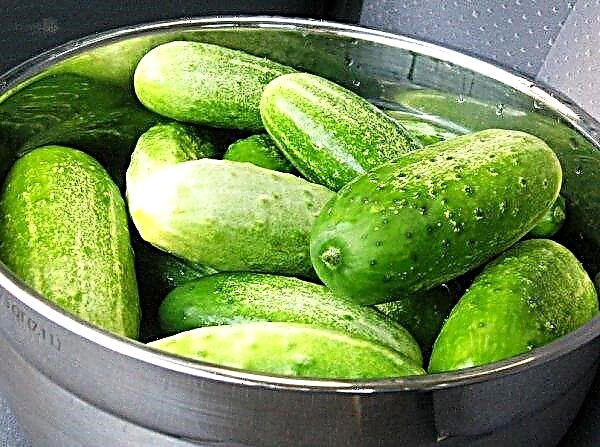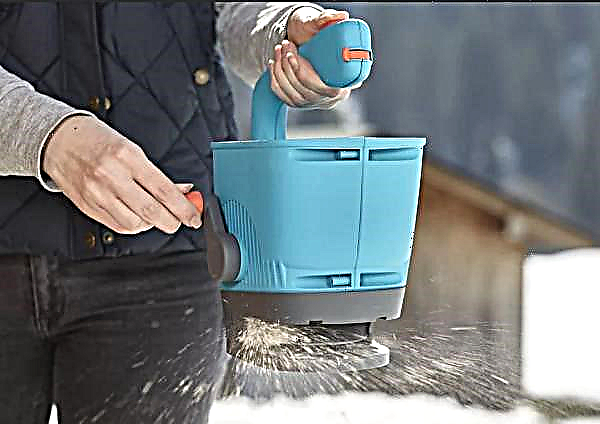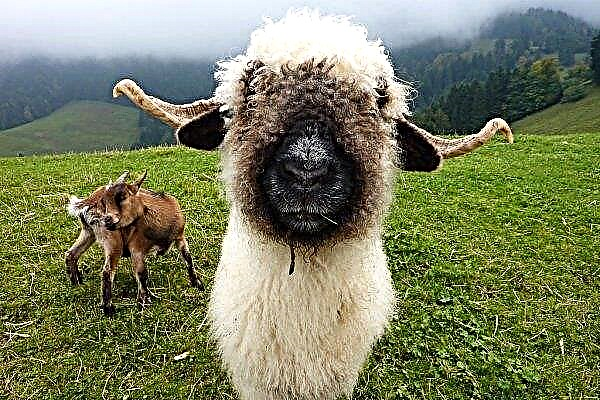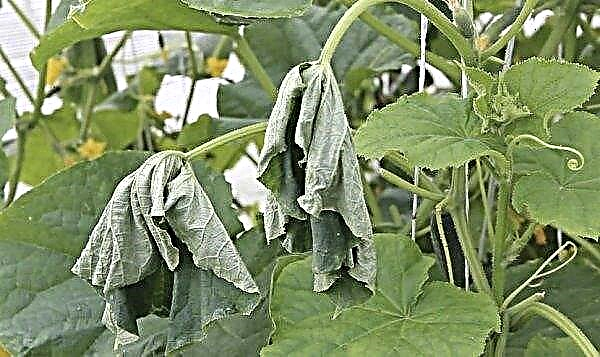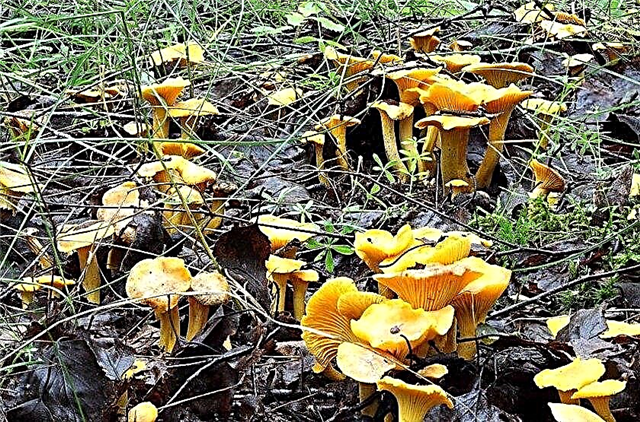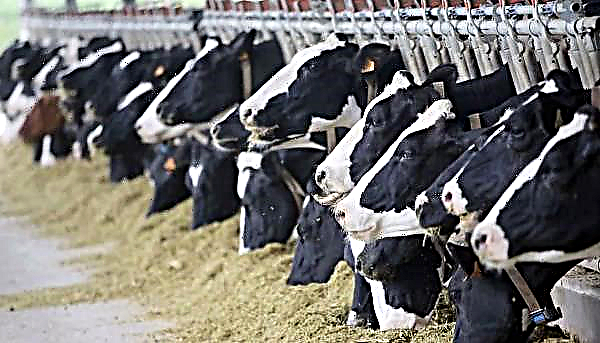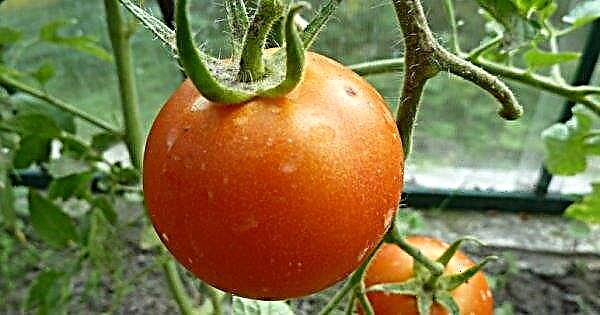Korean pine cedar (Pinus koraiensis) is a beautiful plant that not only decorates the estate, parks or forest stripes, but also gives a good harvest of delicious and nutritious nuts. How to plant and care for this plant is discussed in this material.
Botanical tree description
Korean pine has a description that is quite characteristic for a decorative coniferous tree. The dense conical crown consists of sparsely branched branches that grow upward or with a slight deviation from the vertical axis. The height, depending on the variety, can range from very small to gigantic - from 1.5 to 50 m. The needles are hard and thick, gray-green (in some species it is yellowish), the length of the needles is up to 20 cm. On the sides of the needle are white-blue in color.
The needles are hard and thick, gray-green (in some species it is yellowish), the length of the needles is up to 20 cm. On the sides of the needle are white-blue in color.
Large cones are cylindrical in shape, with a diameter of 8–15 cm and a height of up to 10 cm. When ripe, they open, providing access to nuts to forest residents and abundantly showering seeds on the ground. Under natural conditions, a tree can live up to 600 years, beginning to bear fruit from 10–25 years of age, depending on the species.
Varieties of pine and their features
There are several varieties that are cultivated in household plots and in parks. Each of them has its own “zest” and looks good both singly and in group landings.
Important! Do not confuse Silver and Glauka, which until 1978 had a common name — Glauka. However, later Silveri was isolated in a separate grade because of its exceptional frost resistance.
The most popular Korean pine cedar trees are as follows:
- Silver (Silveray). A short tree, which at the age of 10 reaches a height of 3 m with a crown diameter of up to 1.5 m. The long, silver-blue needles twist in different directions, as a result of which the spruce tree looks like some thick brushes.
- Jack Corbit A very interesting dwarf "shaggy" look with a conical crown and long, curly, blue-green needles with a silver tint. At the age of 10 years, the height of the tree is not more than 1.5 m.
- Morris Blue Another dwarf variety with a narrow pyramidal crown and long, almost straight bluish-green needles. Within 10 years, the plant reaches growth of about 1.8 m.
- Sulange. Tall tall tree, reaches a height of 40-50 meters and has a beautiful pyramidal crown. The gray-green needles are very long - up to 20 cm. Up to 140 nuts ripen in large cones.

In addition to foreign varieties, Russian experts are trying to select domestic, which are well represented by plants from the Pine genus in a particular area. The Manchurian variety is perfectly adapted in Transbaikalia, Altai, in the forests along the Amur River.
Landing
You can plant a plant as a seedling or seed. The second option is unpromising, since it takes a very long time to wait for the appearance of the sprout and the formation of the seedling - it will take years. It is much easier to buy a ready-made tree in specialized nurseries.
They plant a pine Korean cedar seedling in the following sequence:
- To prepare a hole with a diameter of 60–80 cm, a depth of up to 80 cm.
- Lay 15 cm of vermiculite, fine pebble drainage (diameter 1-2 cm) or broken brick.
- Sprinkle drainage with garden or forest soil at 10 cm.
- Carefully remove the seedling from the container, place it vertically in the pit.
- Sprinkle with soil from the container and local soil so that the root neck is slightly deepened in the soil.
- Carefully tamp the root zone and pour plenty of water - a bucket of cool water will be enough.

If, nevertheless, it was decided to grow cedar pine from seeds, then they must be stratified beforehand - soak for two hours in a weak solution of potassium permanganate, soak for 2-3 days in hot water (40–50 ° C), mix with peat and put in plastic or wooden box for germination. Three months later, hatching sprouts are planted in the ground, watered and covered with crushed peat or sawdust.
Important! Planting with seeds is best done before the first frost. At the same time, mulching is necessary - it will not only retain heat, but also prevent rodents from finding and digging planting material.
Pine care
Caring for a Korean pine cedar is quite simple, since the plant is extremely unpretentious.
Basic operations:
- watering;
- top dressing;
- loosening the soil;
- mulching of the root zone;
- pruning.
Video: general tips for caring for conifers
Watering and feeding
Water the plant as necessary: dwarf varieties every other day 10 liters, large trees at a young age - after 2-3 days, 20 liters. Watering is moderate, because after heavy rains the soil does not have time to absorb rainfall and is in a wet state for a long time. It is necessary to check how dry it is - if the soil has dried 2 cm in depth, then watering can be resumed.
Fluffy trees with thick long needles well perceive drip irrigation of needles. Such spraying should be done every 2-3 days. Pine can be fed with organic fertilizers once a year in early spring to stimulate the growth of new shoots. Mineral fertilizers in this case are of little use, since the plant is completely self-sufficient and feels great without undue “chemistry”.

Loosening and mulching
So that the roots of the young tree receive a sufficient amount of air, the soil around the seedling is loosened after each watering and rain. And in the autumn-winter period, the basal territory is mulched with sawdust, pine needles or agrofabric. This allows you to keep warm and organize growth conditions similar to natural ones.
Did you know? The longest needles among all conifers — on the Swamp pine. Their length reaches 45 cm, which allows you to clean the air well.
Pruning
Dwarf varieties with long needles are prone to thickening, which negatively affects the development of branches, since they are isolated from lighting. Every spring, it is necessary to inspect the plant and remove excess shoots, old branches and those paws that spoil the geometry of the crown. Trim with a sharp knife or secateurs, which will not spoil the structure of the branch. You also need to remove diseased shoots, and burn them outside the territory of the site or park.
Trim with a sharp knife or secateurs, which will not spoil the structure of the branch. You also need to remove diseased shoots, and burn them outside the territory of the site or park.
Possible diseases and pests
Korean pine is not susceptible to pest attacks, as it has good immunity. The only insect that can harm the plant is spruce-fir hermes. This parasite attacks the needles, bending the needles, after which they turn yellow, and the tree stops growing.
Hermes himself is not a deadly pest for the pine tree, but it weakens the plant, after which he is attacked by bark beetles and barbel that can kill the tree. The parasite also carries coniferous bacteriosis, which is fatal for them. The ingestion of an insecticide on hermes does not lead to its death - its integument is not susceptible to poison. But eating processed needles for him is fatal.Did you know? The oldest tree ever existing — Matusela pine, whose age is 4842 years.
 Prevention is carried out in the spring - the spruce branch is examined and, when signs of the presence of hermes are detected, it is treated with insecticides. Suitable "Aktara" or "Commander."
Prevention is carried out in the spring - the spruce branch is examined and, when signs of the presence of hermes are detected, it is treated with insecticides. Suitable "Aktara" or "Commander."
The use of wood in landscape design
Dwarf varieties of Korean pine look better in groups, forming a certain community of plants on hillocks or in hollows. They look equally good both in small areas and in wide park areas.
 Representatives of large varieties have a certain monumentality and can be grown as a tapeworm (lonely tree), or a group of pines in the depths of the park.
Representatives of large varieties have a certain monumentality and can be grown as a tapeworm (lonely tree), or a group of pines in the depths of the park.
Korean cedar pine is an ornament both for the site near the house and for park landscapes. This unpretentious tree will fit into almost any design, and for decades it will be its hallmark.

